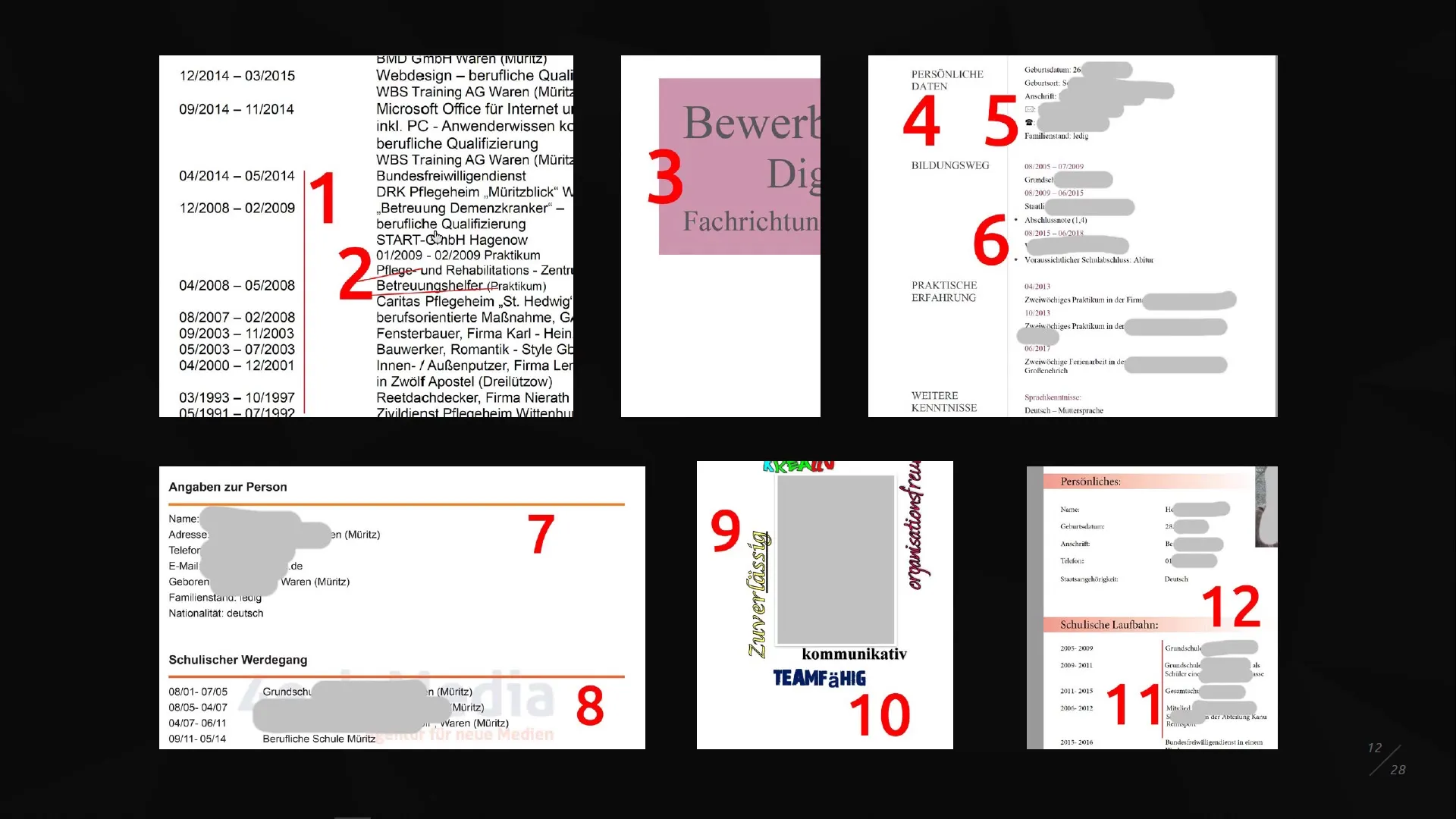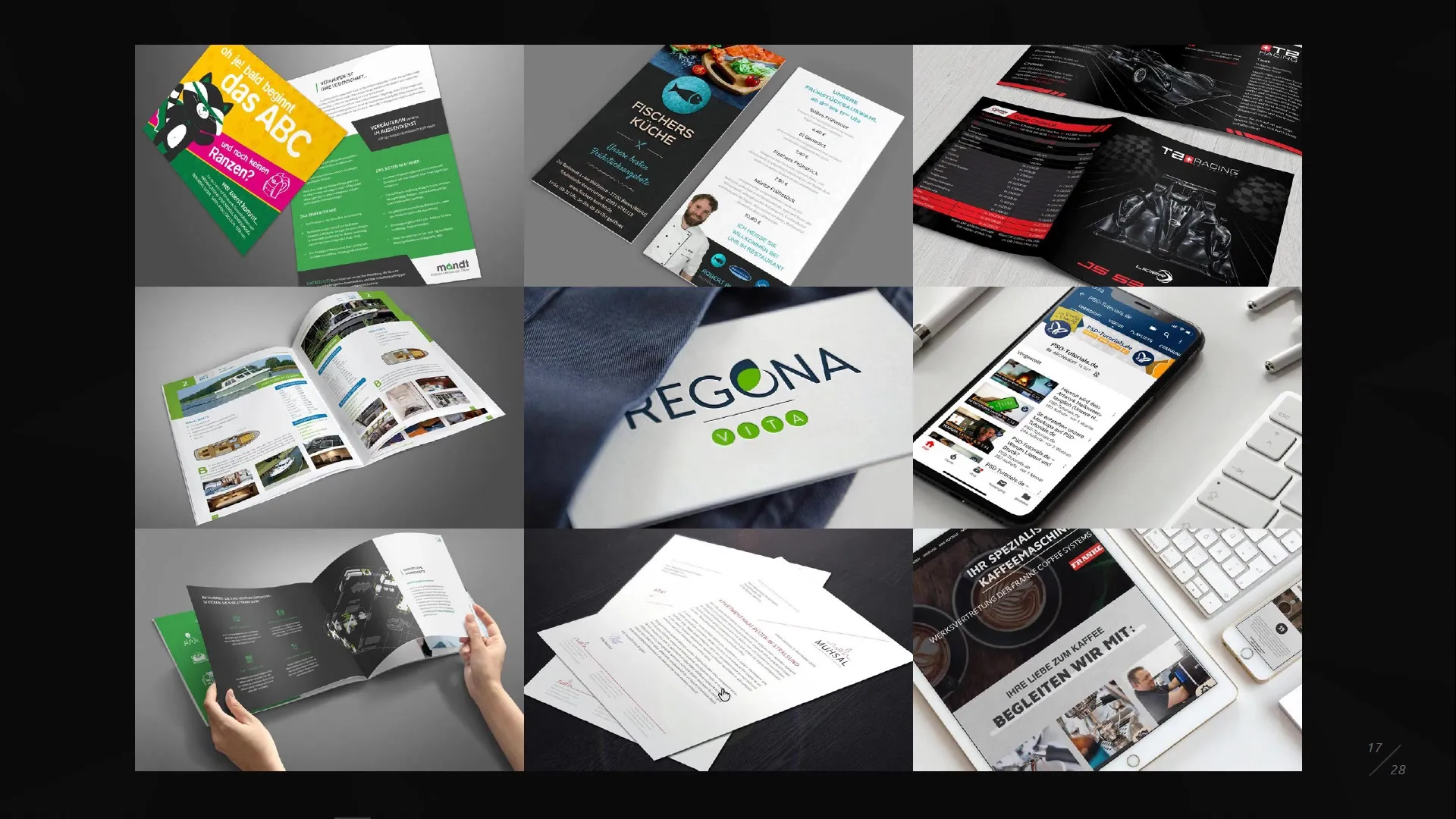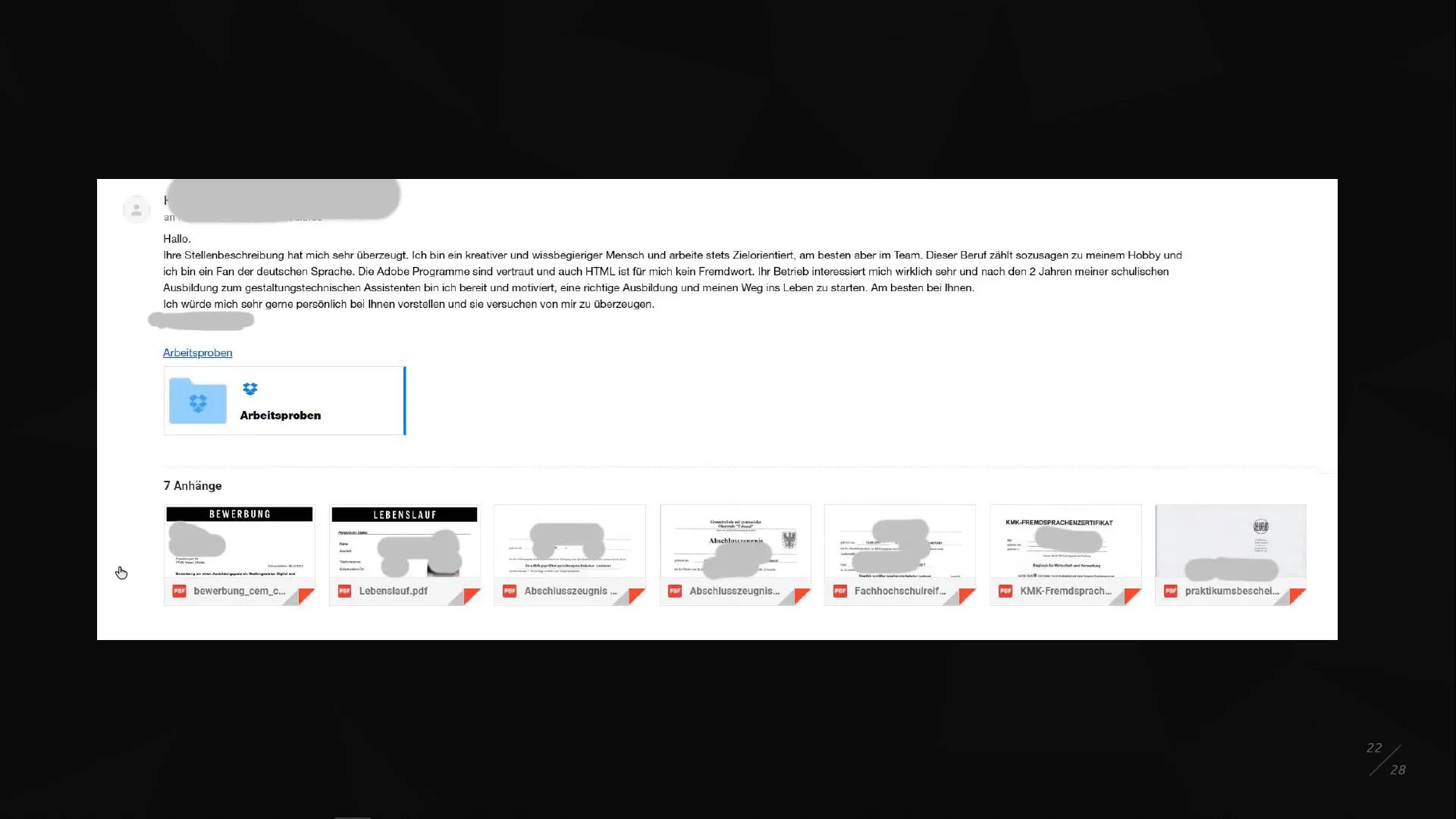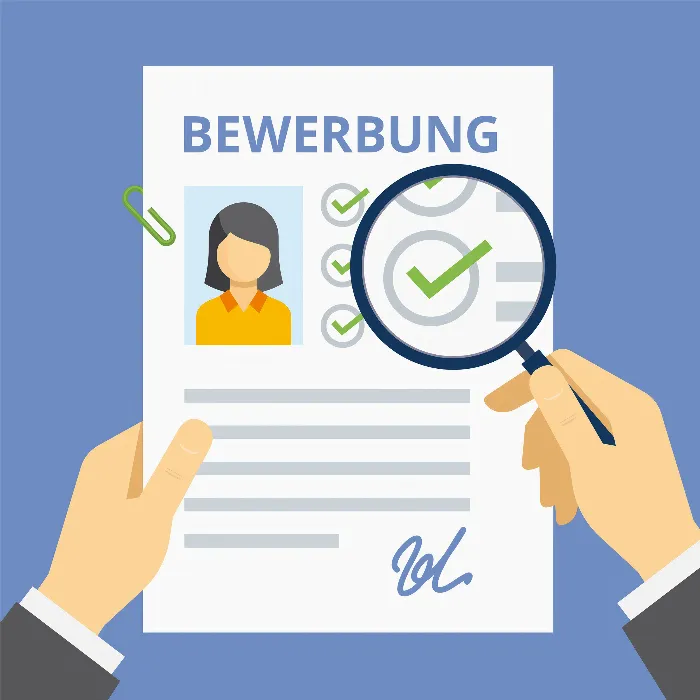The application in the creative industry often poses a challenge, as you need to stand out from other candidates. Simply sending standard applications is not enough. Rather, it is important to express your creativity and individuality through your documents. This guide will help you effectively design your application materials to shine in the selection process.
Key Insights To stand out from the crowd, you should consider the following aspects: Make your documents unique, pay attention to an appealing layout and clear typography, succinctly articulate your benefits for the company, and skillfully showcase your work samples. Avoid typical no-gos and keep your documents professional and attractive.
Step-by-Step Guide
Step 1: Understanding the Company’s Needs
Engage deeply with the company you are applying to. It’s not just about your qualifications, but primarily about conveying the value you bring to the company. Ask yourself: What does the company gain by hiring you? This lays the first foundation for your application.
Step 2: Designing the Layout
Pay attention to individuality in the layout of your application. Standard templates are often dull and unnoticeable. Use appealing visual elements that reflect your creativity. A professional design sets you apart from other applications and ensures you catch the eye immediately. Remember to avoid high-contrast colors and too many font types; a maximum of two font types should be used.
Step 3: Optimizing Typography
The choice of fonts is crucial. Use a maximum of two combined fonts. For example, you could choose a modern sans-serif font for the body text and a bolder one for headings. Avoid standard fonts like Arial or Times New Roman, which are relatively boring. Consider whether your chosen fonts support umlauts to avoid unwanted characters appearing.

Step 4: Relevance of Information
When creating your resume, be sure to include only relevant information for the position you are applying for. Avoid listing all professional positions and focus on the most important skills and experiences that are relevant to the role. Necessary details about your background that are irrelevant do not belong in the resume and should be reduced to the essentials.
Step 5: Presenting Work Samples
To substantiate the quality of your application materials, work samples are essential. Ensure that the samples are relevant to the job you are applying for. Use mockups to present your designs attractively, rather than just displaying PDFs in standard format. For instance, if you create a concept design for a fictional product catalog, showcase it in a professional mockup environment.

Step 6: The Benefit-Based Pitch
Craft your cover letter to consider the company's perspective. Clearly state what benefit your hiring brings to the company. Start with a personal address instead of "Dear Sir or Madam" to leave a positive first impression right away. In three to four paragraphs, you should then formulate your pitch about how you can support the "three P's" – People, Processes, Profit.
Step 7: Review and Proofreading
Before sending your application, check it for spelling, grammar, and the correct address. It is essential that the company name and your contact details are error-free. A small mistake can ruin the first impression. Conduct a thorough final check well ahead of submission to ensure that everything is consistent and professional.
Step 8: Setting the File Format
The formatting of your documents is also important: Send your application in PDF format. PDFs ensure that your layout and design arrive as you created them. Create two separate files: one for your application materials and the other for work samples and certificates.

Summary – Applying in the Creative Industry: Crafting the Perfect Application
In summary, it is essential to stand out in your application. Pay attention to a creative layout, appealing typography, and present your work samples in a clear, structured format. Clearly articulate your benefits for the company and ensure a flawless submission.
Frequently Asked Questions
How should I design my layout?It is important to choose an individual layout that reflects your creativity and deviates from standard templates.
What fonts should I use?Use a maximum of two combined fonts from professional and modern collections.
How do I structure my resume?Focus on relevant information to give your potential employer a clear overview of your skills.
How do I present my work samples?Use mockups to present your work samples attractively and show relevant work that meets the agency's requirements.
How many attachments should I include?It is advisable to use a maximum of two attachments in PDF format, including a link to your work samples.


